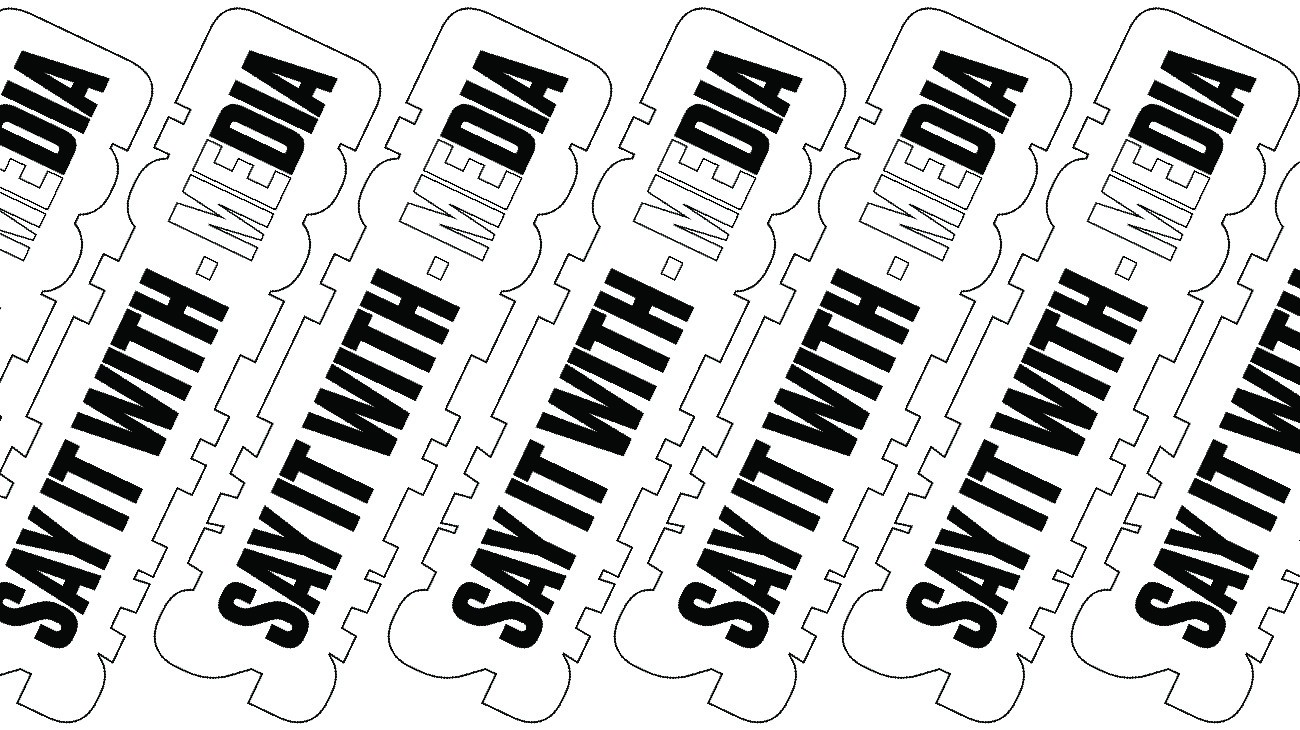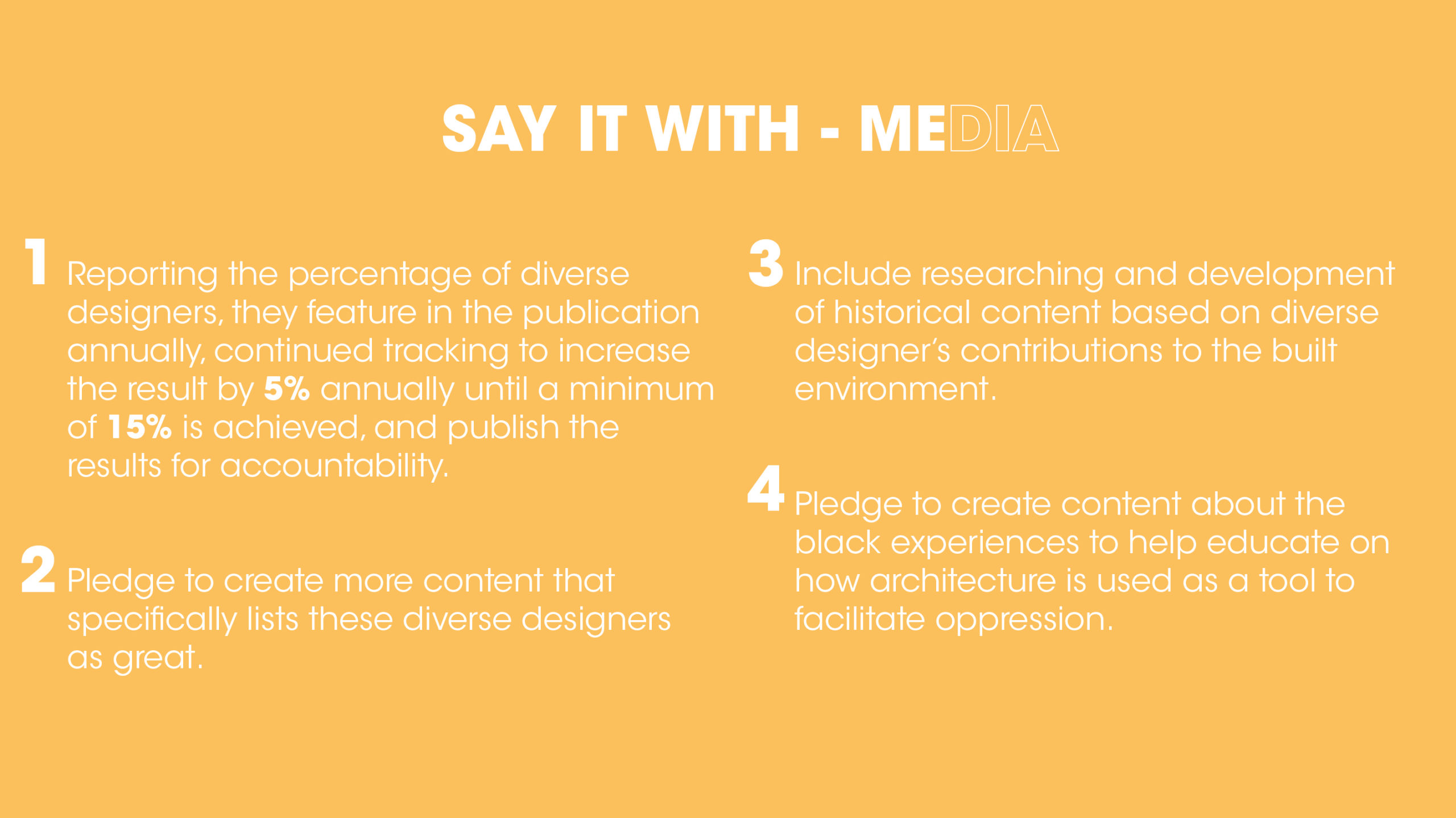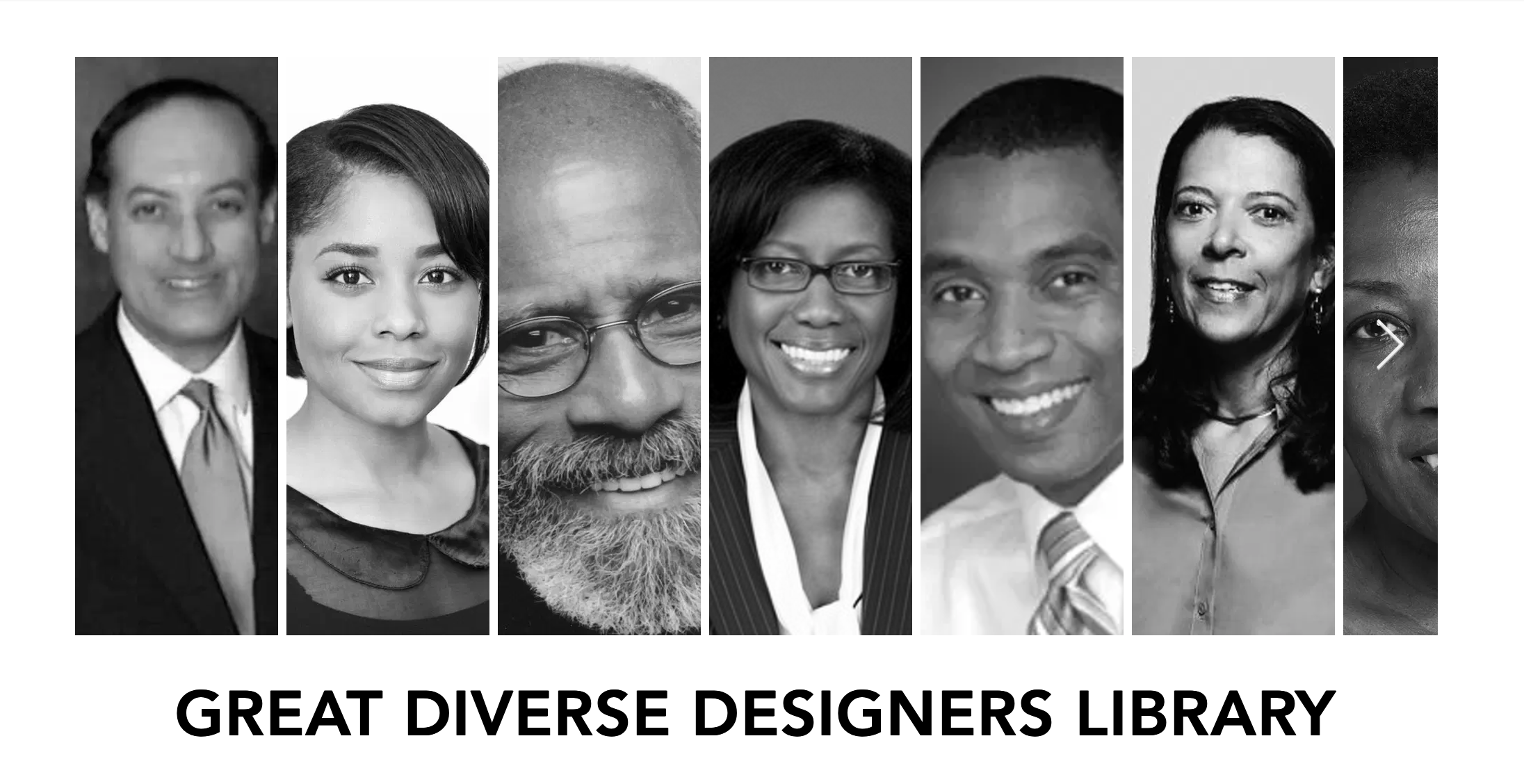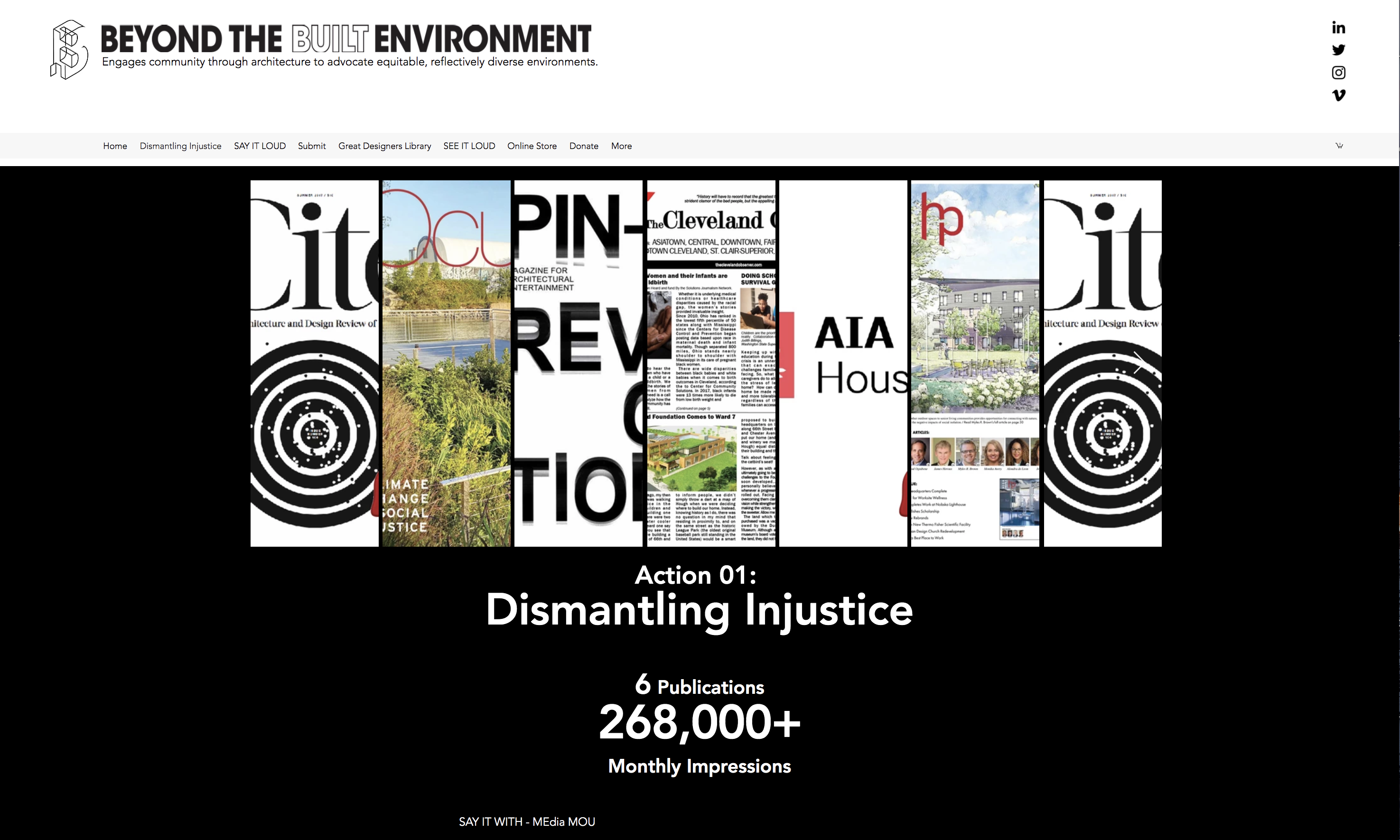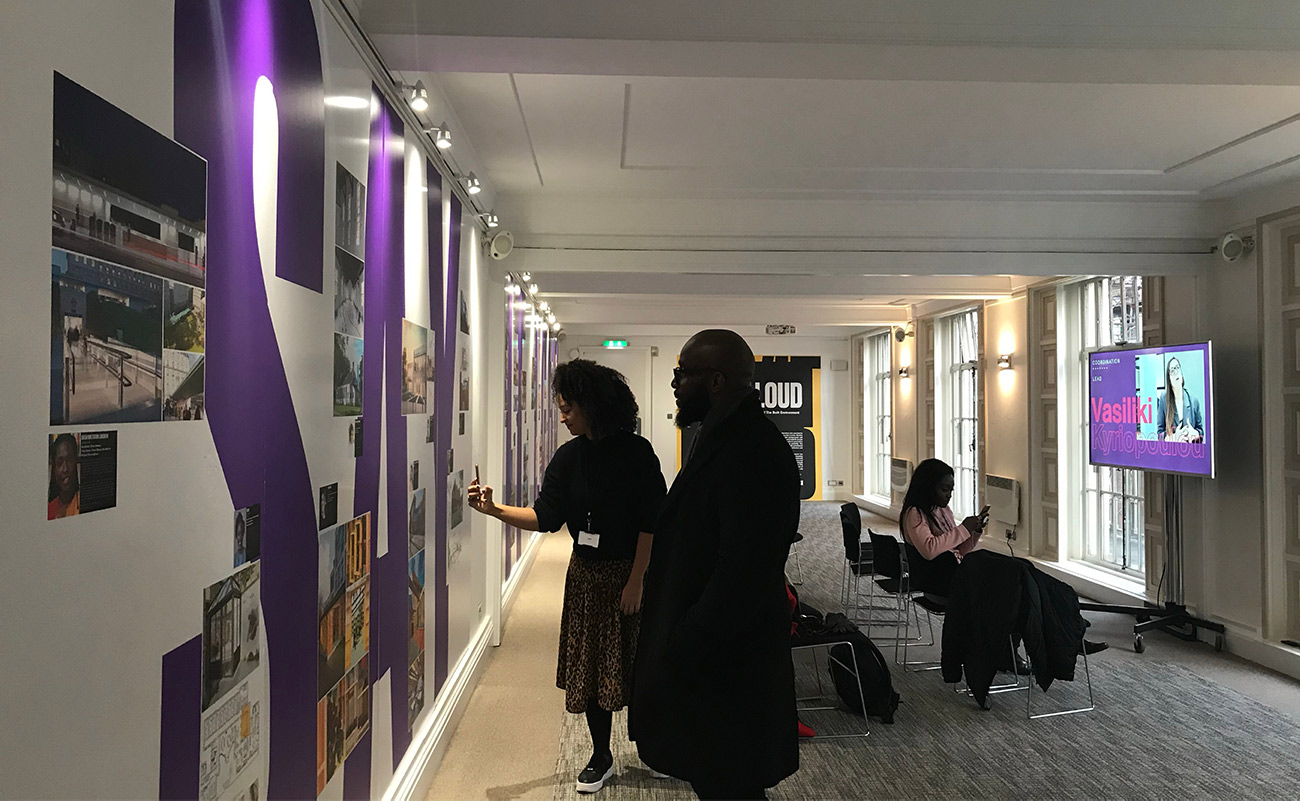Getting the Word Out
Pascale Sablan is pushing the design press to increase its coverage of women and BIPOC architects.
Beyond the Built Environment, a nonprofit founded in 2018 by Pascale Sablan, has won widespread recognition for its work championing women and BIPOC designers through exhibitions and advocacy. One of the many initiatives launched under this umbrella is SAY IT WITH – MEdia, which seeks to increase press coverage of diverse architects. The League’s Anne Rieselbach and Sarah Wesseler spoke to her about the effort.
*
Sarah Wesseler: What do you hope to accomplish with the SAY IT WITH – MEdia project? How did it come about?
SAY IT WITH – MEdia was the product of frustration regarding the lack of content accessible about BIPOC and female architects.
I often talk about how if one Googles the words “great architects” a banner comes up with 50 names and faces, and this includes maybe two women, zero African Americans, and just a few other diverse individuals. I reached out to my network and scheduled a meeting with a team at Google’s office in New York to understand why the results are so skewed toward white men. I provided my deck of the issue and ran a search in front of them. But they said their search algorithm wasn’t the issue—it was that there’s not enough content being created about us for it to find. So that was an a-ha! moment.
Inspired by all the statements of solidarity that many firms, institutions, organizations, and publications were putting out last year, I thought, how can I leverage that appetite to engage? I wanted to step away from general statements to more targeted action items in which we commit to push for change, then track that change from month to month, year to year, decade to decade. It’s not about just recognizing injustice, or talking about injustice, or being sad about it, but instead actually saying, “OK, everybody pick up your hammer, however big or small it is, and start chipping away.” These problems are hard, they’re complex, but lots of things are hard, and we need to commit to solving them.
And it’s not just on firm owners to solve the diversity issue—it’s the entire economy and ecology of architecture, and publications play a very big role. I realized that with all of the content I had created with the SAY IT LOUD exhibitions, I have the information these publications need to give exposure to a more diverse group of designers.
That’s what inspired the SAY IT WITH – MEdia campaign, which I launched on Juneteenth last year as part of my Dismantling Injustice initiative.
With this campaign, we’re asking publications to commit to one or more of four main points. The first point is publicly reporting the percentage of women and BIPOC designers whose work they feature each year and increasing that percentage by 5 percent annually until they reach a minimum of 15 percent. I thought those numbers were reasonable and not overly aggressive, although a lot of us probably want a much higher percentage.
The next point we’re asking for is to be mindful of the language they use—to call us great. We’re quick to say, “the great Frank Lloyd Wright,” “the legendary Frank Lloyd Wright.” To address that SEO pushback that I got from Google, can we say, “the great Paul Revere Williams,” “the legendary Norma Sklarek”? Right now, there’s not enough content that calls us great. That’s why I launched the Great Diverse Designers Library—everybody’s name gets attached to the word “great.”
The third thing we’re asking is for publications to create content recognizing the historical contributions of women and BIPOC designers. We’ve been here doing incredible work for years, so editors can leverage their research teams to pull forward these contributions.
And then the last point is to leverage their platform to educate about how architecture is utilized to facilitate racism and oppression. There’s a general lack of education and awareness of how architecture is used in the negative, not just the positive.
Now, any publication who signs the commitment does not need to sign on to all four points. They might say, “I only want to track our coverage of diverse designers,” or “I only want to commit to calling you all great.” But I’m asking them to make some commitment so that if the editor changes or the leadership shifts, they’ll still be involved. I learned this the hard way through my advocacy work: I’ll have a leader in a particular institution that completely gets it and is helping, and then that person retires, and the next person is like, “Yeah, no, I’m not doing that anymore,” or, “Oh, we never had an official document in place to keep this going.” So now I ask for an official commitment.
Anne Rieselbach: What kinds of publications have you reached out to? How did you decide which ones to target?
I am looking at print and digital publications, and not just architecture but landscape, interiors; anybody geared to the built environment.
So far, I’ve focused on US-based publications that have large subscription bases. From my calculations, there’s an opportunity for 79 million monthly views on this content, and currently we have 268,000 monthly impressions through the commitments made so far by the six media outlets who’ve signed on.
But it’s not sustainable if it’s only me reaching out to editors. So this year I’ve hired part-time staff to focus on this initiative, with the goal of creating systems and engaging more people from our community in the process. I’ve also redesigned the website to have the logos and prefilled emails, so anyone can help encourage the publications to sign on.
Wesseler: What kind of feedback have you received from publications? Have they been willing to commit?
Publications run by institutions have been most likely to commit. Someone like AIA will say, “We agree with this push for more diversity, so we’ll make this commitment with our Oculus magazine.” Publications that are already grounded in advocacy are fine with making the commitment without much correspondence with me.
One way I’ve gotten commitments is by asking publications to sign up when they ask me for an interview. That happened with PIN–UP. When writers contact me, I say, “Well, while we’re talking about advocacy, can you put me in touch with your editor-in-chief to see if you guys would be interested in this initiative?”
A lot of publications have been hesitant. One of the major questions I get is, “Pascale, we think this is a great idea, but how do we know we’ll have enough content to actually sustain this commitment in the long term?” And my answer is, “The SAY IT LOUD exhibitions provide a lot of content to draw from—and also, you guys have teams of people who are tapped into the industry, and you should develop methods of reaching diverse communities as well.”
The other question that comes up is, “Exactly how do we codify which projects are done by diverse designers? Let’s say it’s a project with a big team that includes women and BIPOC individuals. If we showcase this project, does that count or not?”
I don’t want to impose an exact way of doing things, because every publication is different. We’re asking people to come up with their own answer to this question, creating their own method to determine accountability and track progress. We’ll circle back at the one-year mark of their commitment to review their process and offer suggestions based on what other publications have been doing.
Wesseler: It’s an interesting question and brings up a broader tension in this field. There’s a general tendency to give most of the credit for projects to particular individuals, when in reality almost everything that happens in the built environment is a pretty intensive group effort involving lots of people, both architects and non-architects.
Absolutely. That was part of the genesis for SAY IT LOUD: You don’t have to be the principal who’s stamping and sealing the drawings to claim your contributions to that project, as long as you’re honest about what your specific role is. It’s about identifying all the ways that women and BIPOC designers have made a difference.
One reason I think it’s important to raise the profile of individual designers or firms is that when people are featured in the media and win awards, it creates opportunities for potential clients to learn about them and reach out with more work. It’s a financial justice movement, not just a question of us loving to see how our projects look in print. Although we do!
Another important point to consider is that we as a profession focus a lot on the largest, most expensive buildings. But if you look at firms owned by African Americans, they’re usually very small, just one or two people. At that scale the work is also smaller—single-family residential, etc. With this pledge, I’m asking for publications to rethink their criteria for what counts as a successful project, what counts as exciting. A building may not have the largest number of square feet, but does it serve the community?
Interview edited and condensed.
Explore
Colloqate lecture
Bryan Lee and Sue Mobley of New Orleans nonprofit Colloqate speak as part of the Emerging Voices series.
Design as civic duty
Elizabeth Timme, co-director of LA-Más, believes that architecture needs to rediscover its political imperative.
Everything We Can
Low Design Office seeks opportunities to intervene in complex global systems.

